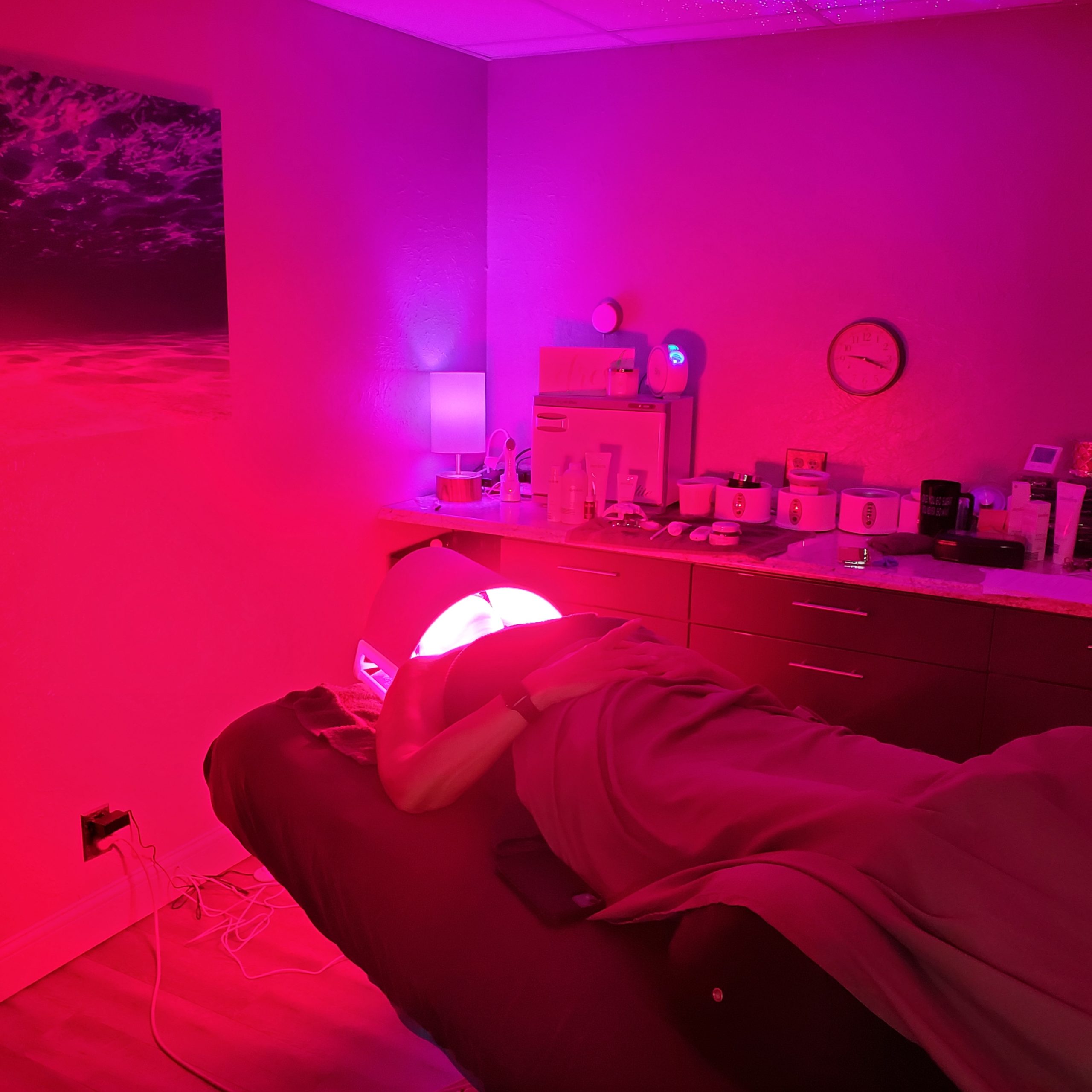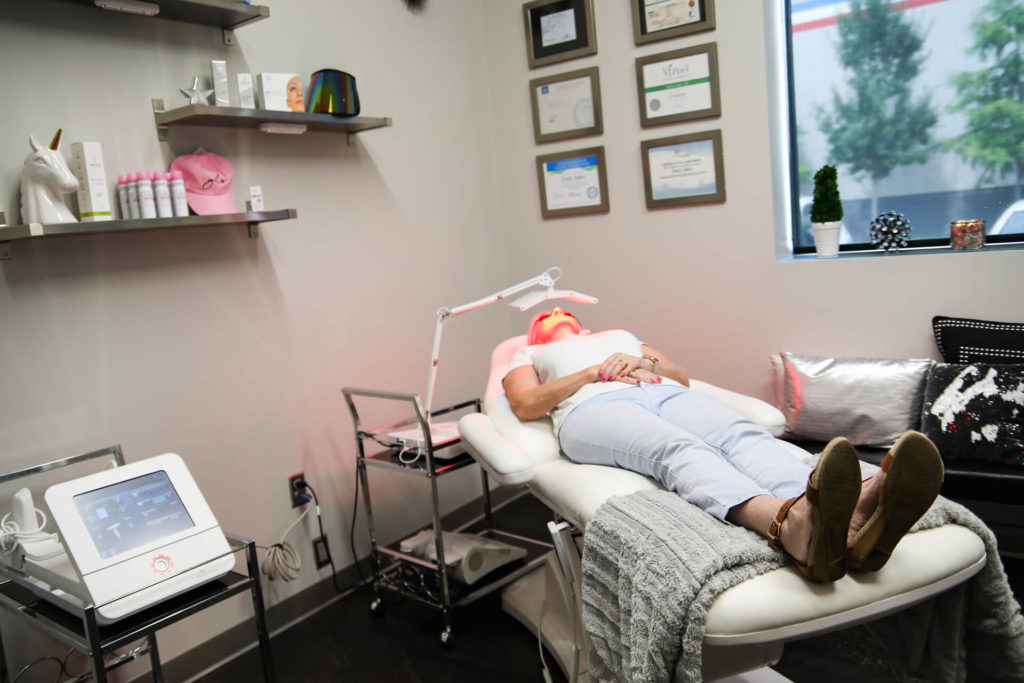Antwort Do room LED lights help skin? Weitere Antworten – Is LED light good for skin
Red LED light stimulates collagen, which is important for healing wounds. People who have had surgery for skin resurfacing have also had red LED light therapy after the procedure. Studies have found that this form of light therapy lowers redness, swelling, and bruising, and speeds up the healing process.Can you use your mask daily The answer is yes! LED light therapy devices use UV-free and nonthermal LED bulbs to treat skin – not damage it. In fact, red light therapy and infrared therapy are often recommended as routine treatments for conditions such as chronic pain.Red LED light therapy may reduce inflammation and stimulate the production of collagen, a protein responsible for younger-looking skin that diminishes with age. Blue LED light therapy may destroy acne-causing bacteria (P. acnes).
How often should I use LED light therapy at home : Therefore, LED therapy is gently and safe for regular use. Studies show that best results are achieved when treatments are performed with approximately 48-72 hours apart for 8 sessions and then ongoing maintenance sessions from there.
Is too much LED light bad for skin
While overuse isn't going to cause burns or serious skin damage, if you're using an at-home LED device, be sure to follow the instructions for use. It's also important to keep your eyes properly protected during each treatment session.
Is LED better for skin than UV : LED bulbs are thought to be safer than UV bulbs, as they transmit weaker rays. With prolonged exposure to LED light (vs. UV light), it is considered not as hazardous, as for example with excessive tanning, which can darken the skin and may lead to skin cancer with prolonged exposure to the sun's UV rays.
How long is each treatment The treatment should last between 10-20 minutes on average. The best results are obtained from a treatment that always lasts 20 minutes.
Fortunately, there are no known adverse effects of LED light therapy. Based on studies, this form of phototherapy has an excellent safety profile and overdoing it may not be possible for most. However, it's also not advantageous if you do it inconsistently.
Which color LED reduces acne
Blue LED light is most often used to treat acne. It may do this by reducing activity in the sebaceous glands, so they produce less of the oil that can plug the hair follicles, leading to acne. Blue light may also kill acne-causing bacteria known as Cutibacterium acnes.Blue LED light, especially in combination with red light therapy, emits specific, clinically-proven wavelengths of light to trigger an all-natural effect in human tissue, killing acne-causing bacteria, decreasing inflammation, and improving skin tone, texture, and clarity from the inside out.If the lamp is close – particularly desk lamps, bed lamps, and overhead lamps – the light and heat emitted can worsen skin conditions in photo sensitive individuals. Avoiding close contact with the light or wearing SPF indoors can help reduce this exposure.
Ultraviolet B Light Emitting Diodes (LEDs) Are More Efficient and Effective in Producing Vitamin D3 in Human Skin Compared to Natural Sunlight.
Can you overdo red light : Red light therapy is generally considered safe, even though researchers aren't exactly sure how and why it works. And there are no set rules on how much light to use. Too much light may damage skin tissue, but too little might not work as well.
What are the negatives of LED light therapy : Even though this type of treatment is generally very safe, negative effects may occur. As a consequence of light therapy, patients can complain of irritability, headaches, eye strain, sleep disturbances, and insomnia. Mild visual side effects are not unusual but remit promptly.
Does LED light stimulate hair growth
Studies have shown that LLLT stimulated hair growth in both men and women. Studies with largest randomized controlled trials demonstrated statistically significant hair regrowth by terminal hair count in both males and females.
Red light therapy is a must-have anti-aging treatment when it comes to skincare for its ability to stimulate collagen production and improve elasticity. Blue light therapy is the holy grail for diminishing breakouts, controlling oil production, and reducing hyperpigmentation.“At-home masks are typically not as effective as in-office treatments because they are not as highly powered.” That's because those masks you'll find at a physician's office are not safe for at-home use and need to be used by a licensed professional.
Do indoor lights age your skin : While prolonged exposure to sunlight is a well-established risk factor for premature skin aging, the light emitted by most common household bulbs does not pose a significant concern.


:max_bytes(150000):strip_icc()/LEDlighttherapy-385caee230b14094b55d7c0c232cca26.png)


